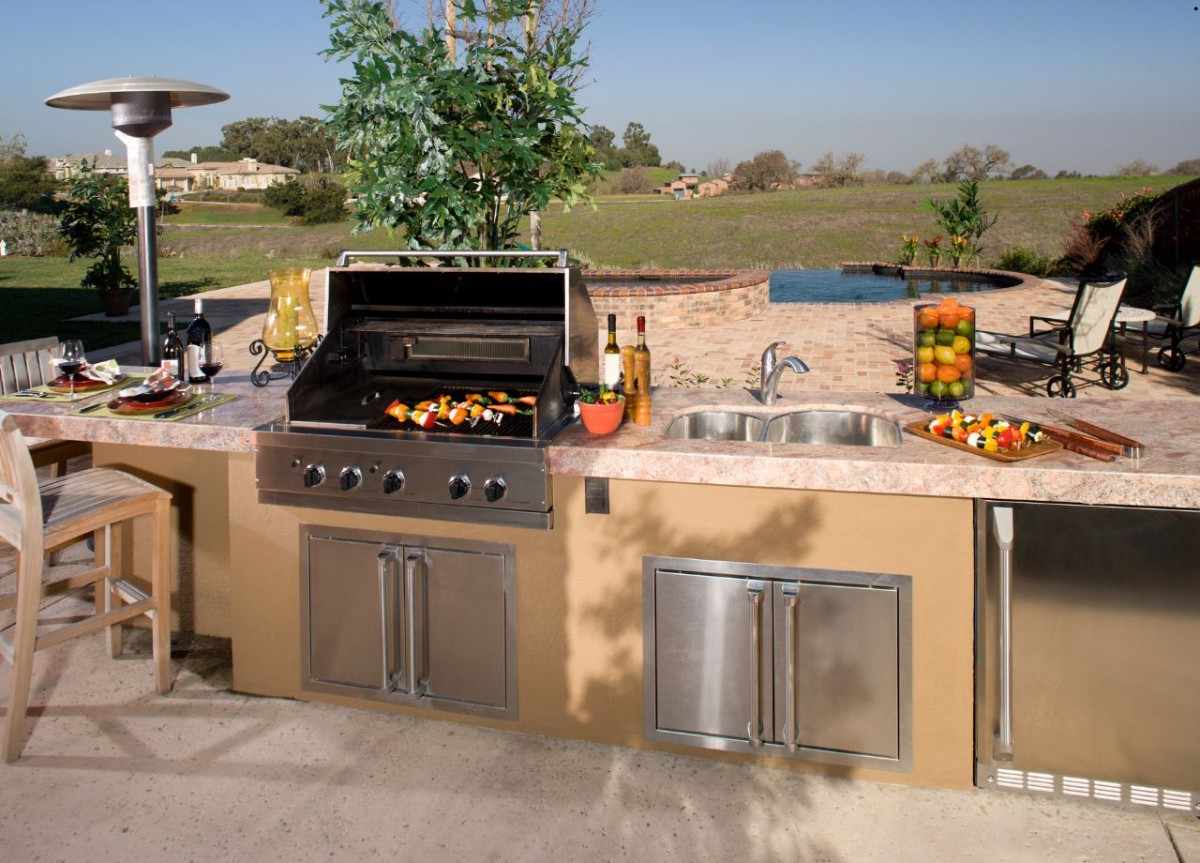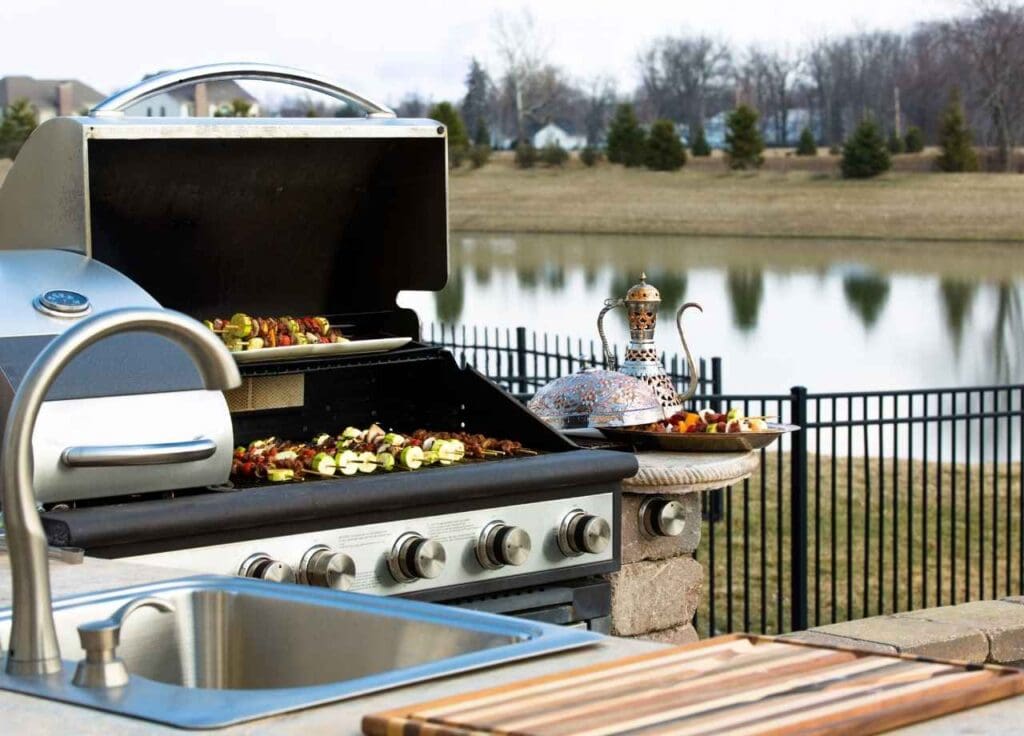
Outdoor Kitchen Pellet Grill Setup Guide: What to Know Before You Buy
Adding a pellet grill to your outdoor kitchen changes how you cook and gather with friends and family. But before buying one and locking in your setup, you need to think through a few key points. From venting and cabinetry to fuel storage and long-term maintenance, pellet grills aren’t plug-and-play like a simple propane unit. They’re versatile, sure—but they also come with specific needs. Calico Outdoor designs and installs custom outdoor kitchens in Jacksonville that integrate pellet grills seamlessly, but whether you’re using our services or planning on your own, knowing what you’re getting into helps you avoid costly mistakes.
Table of Contents
Understanding What Makes Pellet Grills Different
Pellet grills use wood pellets as fuel and an electronic system to maintain temperature. That makes them part smoker, part oven, part grill. Because of their precision control and wide temperature range, they’re perfect for smoking brisket low and slow one day and searing steaks the next. But unlike gas or charcoal grills, they need electricity to operate. That means your outdoor kitchen layout has to include a power source.
Pellet grills also require dry storage for the pellets. If you leave the pellets exposed to humidity—especially in a place like Jacksonville where moisture is always in the air—they can swell, fall apart, and clog the auger system. This isn’t a “set it on a shelf and forget it” situation. Your design should accommodate sealed pellet storage in cabinetry or in a weather-tight bin nearby.
Ventilation and Heat Considerations
Pellet grills need adequate airflow. Even though they’re more controlled than a traditional smoker, they still generate consistent heat and exhaust. If you’re installing the grill under a covered patio or within a grill island, proper venting is critical. The wrong setup can lead to smoke buildup, heat trapping, or even damage to your structure.
One common mistake is placing a pellet grill too close to a wall or under a low ceiling without accounting for smoke and heat. Hood vents or overhead ventilation systems should be part of the design if you’re not in an open-air setup. Also consider heat-resistant materials for the surrounding cabinetry and counter space—especially if your pellet grill runs hot during searing sessions.
Built-In vs. Freestanding Pellet Grills
Not all pellet grills are made to be built in. Some models are designed to be freestanding only, which can complicate integration into a countertop or grill island. Before making a purchase, check if the manufacturer supports built-in applications. That typically means it has proper insulation, a front-venting design, and accessories like trim kits.

Retrofitting a freestanding pellet grill into an outdoor kitchen can be risky. Heat output and airflow might not be managed correctly, voiding warranties or creating safety hazards. If you’re set on a built-in look, go with a brand that offers a drop-in pellet grill designed for outdoor kitchen use. It’s a detail that matters not just visually, but functionally.
Electrical Requirements and Protection
Since pellet grills rely on digital controllers and auger systems, they need a steady power supply. Most run on standard 110-volt outlets, but it’s still a good idea to check the wattage and amperage requirements. If you’re running other appliances nearby, such as a fridge or sound system, make sure the circuit can handle it all.
You’ll also want to weatherproof the outlet. Use a GFCI-protected receptacle with a proper cover, and position it where cords won’t be exposed to standing water or direct rain. Some pellet grills offer Wi-Fi or Bluetooth connectivity, so stable power helps avoid interruptions or resets in long cooks.
Pellet Storage and Moisture Protection
Wood pellets absorb moisture like a sponge. Even a small amount of exposure can render them unusable. This isn’t something you want to figure out when your brisket’s halfway cooked and the grill jams up. Make sealed storage part of your kitchen plan from the start.
Stainless cabinets with weather-tight gaskets or custom bins that can be tucked into dry cabinetry are great options. Don’t store pellets under the grill or in an open drawer. Think like a chef: where will you refill, and how far do you want to walk to get it done? Keep it close and keep it dry.
Maintenance and Accessibility
Pellet grills need a bit more maintenance than gas units. You’ll need to empty ash, clean out the burn pot, and occasionally vacuum pellet dust from the hopper and auger housing. That means accessibility should be part of your kitchen design. If the grill is boxed in too tightly or surrounded by immovable stonework, servicing it becomes a headache.
Leave space to access the hopper, rear vents, and any grease management systems. You should be able to lift the hood fully, remove grates for cleaning, and open the control panel without obstruction. It’s not just about convenience—it’s about keeping the unit running efficiently and avoiding breakdowns.
Cooking Flexibility and Planning for Use
Pellet grills are often the centerpiece of an outdoor kitchen, but they pair well with other cooking elements. A flat-top griddle, side burner, or gas grill can round out your setup for times when you want more direct heat or quicker cook times. Since pellet grills take a few minutes to ignite and stabilize, they’re not ideal for those “let’s grill burgers in ten minutes” scenarios.
Think about how you cook. Do you want to smoke meat on weekends but still have weeknight convenience? The ideal layout might include a pellet grill alongside a quick-starting gas burner or even a pizza oven. Having options gives you flexibility without giving up that wood-fired flavor.
Grill Placement and Overall Layout
Don’t wedge the pellet grill into a corner where airflow suffers or cleaning becomes a chore. It should sit in a space that allows smoke to escape easily and gives you room to move. You also want to keep it away from prevailing wind directions that might blow smoke back into your seating area or house.
The hopper side of the grill should be easily reachable, and the prep space should be adjacent rather than across the kitchen. Think through the movement from marinating to grilling to serving. Keep raw ingredients separate from cooked food space. It might sound like chef talk, but this flow matters more than people realize, especially when cooking for a group.
Final Thoughts Before Buying
Buying a pellet grill for your outdoor kitchen isn’t just picking a brand you like and plugging it in. It affects how your kitchen is built, how it’s vented, how it’s powered, and how you’ll cook. The right setup gives you years of reliable use and a better cooking experience. The wrong setup turns into a constant series of workarounds and frustrations.
At Calico Outdoor, we’ve worked with homeowners across Jacksonville to design custom kitchens that take all of this into account from the start. Whether you go with us or another route, planning for a pellet grill means thinking beyond the surface. It means designing a space that matches the grill’s capabilities with the way you cook and live outside.
Know what you want, understand what it needs, and build a space that does both well.
